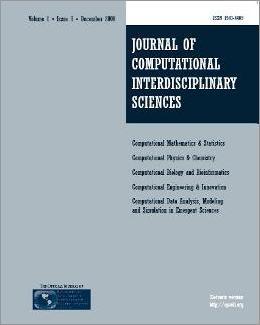
Editorial Office:
Management:
R. S. Oyarzabal
Technical Support:
D. H. Diaz
M. A. Gomez
W. Abrahão
G. Oliveira
Publisher by Knobook Pub


Editorial Office:
Management:
R. S. Oyarzabal
Technical Support:
D. H. Diaz
M. A. Gomez
W. Abrahão
G. Oliveira
Publisher by Knobook Pub
doi: 10.6062/jcis.2010.01.03.0022(Free PDF)
Reinaldo R. de Carvalho, Roy R. Gal, Haroldo F. de Campos Velho, Hugo V. Capelato, Francesco La Barbera, Eduardo C. Vasconcellos, Renata S.R. Ruiz, Joao L. Kohl-Moreira, Paulo A.A. Lopes and Marcele Soares-Santos
We present an overview of current and future Brazilian contributions to an emerging paradigm in astronomy, the Virtual Observatory (VO). Astronomy will soon accumulate an unprecedented amount of data, on the order of 100 PB, while adding 2-4 PB/year an astonishing five orders of magnitude greater than in 2000. The VO is a response to the astronomical community's demands for improved and homogenized access to these data, combined with the tools to manipulate and explore them. It is a complex enterprise with a decentralized, webcentric nature, implying that astronomers need to rethink the old ways of conducting their scientific programs. Today an international effort is coordinated by the International Virtual Observatory Alliance (IVOA). In Brazil, the National Institute for Science & Technology (INCT-Astrophysics) recently created by the Ministry of Science & Technology (MCT) is taking the lead in developing BRAVO (The BRAzilian Virtual Observatory). At the National Institute for Space Research (INPE), we are concentrating our efforts on three distinct aspects of VO development: database development and basic infrastructure, data grid and processing grid implementation, and data mining. This paper describes our approach to creating a roadmap for the VO in Brazil and some technical developments on which we have already embarked.
Virtual Observatories, Machine Learning Algorithms, Network Infrastructure, Data Grid, Data Processing, Data Analysis.
[1] BALL N et al. 2006. ApJ. 650, 497.
[2] BENACCHIO L & PASIAN F. 2007. Grid-enabled Astrophysics, Contributions to the Computational Grids for Italian Astrophysics: Status and Perspectives workshop, held at INAF headquarters, Rome, in November 2005. Polimetrica.
[3] BISHOP CM. 1994. Rev. Sci. Instrum. 65, 1803.
[4] BISHOP CM. 2006. Pattern Recognition and Machine Learning. Springer.
[5] CARETTA C et al. 2008. A&A. 487, 445.
[6] DJORGOVSKI SG et al. 1998. Wide Field Surveys in Cosmology, 89.
[7] DRYDEN IL. 2005. Annals of Statistics 33, 1643.
[8] FADDA D et al. 1996. ApJ, 473, 670.
[9] FRANCž OIS D. 2008. "High-dimensional Data Analysis: From Optimal Metrics to Feature Selection". VDM Verlag.
[10] GARGIULO A et al. 2009. arXiv0902.4383.
[11] HANISCH R & QUINN P. http://www.ivoa.net/pub/info/TheIVOA.pdf.
[12] HARTIGAN JA. 1975. Clustering Algorithms. New York, NY, USA: John Wiley & Sons.
[13] HAYKIN S. 1994. Neural Networks: A Comprehensive Foundation, Macmillan, New York.
[14] HEGE HC & POLTHIER K. 2002. Mathematical Visualization: Algorithms, Applications and Numerics. Springer.
[15] HERNANDEZ-TOLEDO HM. 2008. A&A 136, 2115.
[16] HEY T, TANSLEY S & TOLLE K. 2009. The Fourth Paradigm DataIntensive Scientific Discovery, Microsoft Research.
[17] JAIN AK et al. 2000. IEEE Trans. on Pattern Analysis and Machine Intelligence, 22, 1.
[18] KATGERT P et al. 1996. A&A, 310, 8.
[19] KUNTSCHE EN. 2003. Swiss Journal of Psychology/Schweizerische
Zeitschrift fur Psychologie/Revue Suisse de Psychologie, 62, 202.[20] LA BARBERA F et al. 2008a. PASP, 120, 681.
[21] LA BARBERA F et al. 2008b. ApJL, 689, 913.
[22] LA BARBERA F et al. 2009. AJ 137, 3942.
[23] LA BARBERA F & DE CARVALHO RR. 2009. ApJL, 699, 76.
[24] LOPES PAA et al. 2009. MNRAS, 392, 135.
[25] LOTZ JM et al. 2004. AJ, 128, 163.
[26] MERCURIO A et al. 2008. MNRAS, 387, 1374.
[27] OLSEN LF et al. 2005. A&A, 435, 781.
[28] QUINLAN JR. 1986. Machine Learning, 1, 81.
[29] QUINLAN JR. 1993. Programs for Machine Learning. San Mateo, CA: Morgan Kaufman.
[30] RIEBER LP. 1995. Educational Technology Research and Development, 43, 45.
[31] ROSA RR et al. 2007. Physica A 386, 666-673.
[32] RUIZ RSR et al. 2008. National Congress on Computing and Applied Mathematics, www.sbmac.org.br/eventos/cnmac/xxxi cnmac/PDF/251.pdf.
[33] SHEWCHUK JR. 1996. Applied Computational Geometry: Towards Geometric Engineering, Eds. Ming C. Lin and Dinesh Manocha, Vol 1148 of Lecture Notes in Computer Science, 203 Springer-Verlag.
[34] SOARES SANTOS M et al. 2008. arXiv:0810.3689.
[35] SUCHKOV AA. 2005. AJ, 130, 2439.
[36] TAFFONI G, BELIKOV A & SCHAAFF A. 2009. Mem. S. A. It., 80, 493.
[37] TELEA AC. 2007. Data Visualization, AK Peters.
[38] VALENTIJN E et al. 2006. Astronomical Data Analysis Software and Systems XVI ASP Conference Series, Vol. 376, 2007, RA Shaw, F Hill and DJ Bell, eds.
[39] WOJTAK R et al. 2007. A&A, 466, 437.
[40] WRIGHT H. 2006. Introduction to Scientific Visualization, Springer.